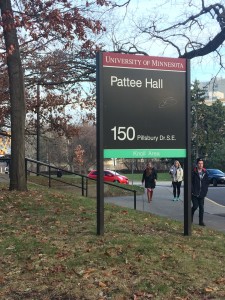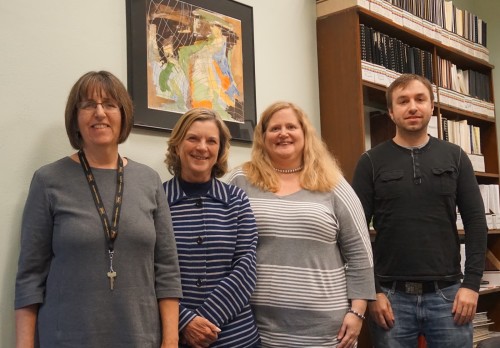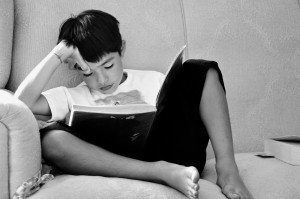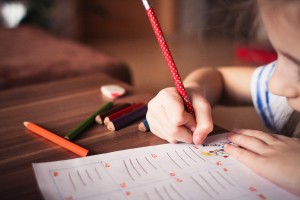This article is also available in: 日本語

I visited the National Center on Education Outcomes (NCEO) located at the University of Minnesota.
NCEO was founded in 1990 with the purpose to identify important outcomes of education for students with disabilities.

For the interview, I had an opportunity to meet Dr. Martha Thurlow (Director of NCEO), Dr. Sheryl Lazarus (Senior research associate), Dr. Laurene Christensen (Research Associate), and Dr. Vitaliy Shyyan (Research Associate).

In early years, education for students with disabilities and students without disabilities often was segregated in the US.
At one point, funding was expanded for education of students with disabilities, however, little was known about achieving desirable outcomes for these students.
Therefore, looking at outcomes was perceived to be very important.
NCEO focuses on how to make both instruction and assessment for students with disabilities more accessible.
Also, the Center conducts a lot of research studies, trainings, and provides services to support not only students with disabilities but also students who are English language learners (ELLs), and ELLs with disabilities.

NCEO’s work is concentrated in three areas:
- Knowledge Development: Analyzing, and summarizing relevant information into publications and other products that can be used to inform states and other entities.
- Technical Assistance: Providing technical assistance to help states with implementing policies and practices.
- Leadership and Coordination: Building strong relationships and collaborating with partners by utilizing evaluation activities to inform NCEO’s products, tools, and services.

After I shared my experiences about my school education in Japan, NCEO mentioned some issues in educational settings in the US.
The first issue is not understanding who people with disabilities are.
In the past, when people thought about people with disabilities, it was only about intellectual disability.
A lot of work was done to clarify who students with disabilities are in the US.
Only a very small portion of those individuals have intellectual disabilities.
There are many other disabilities represented in populations of students receiving special education services.
The second issue is the lack of high expectations of students with disabilities.
If you do not expect that students with disabilities can achieve as well as their peers without disabilities, you do not necessarily worry about instructing them or holding them to the same high expectations.
If that starts in elementary school, they get farther behind throughout their schoolwork and then they are not ready for college or careers.
They should be held to the same expectations as other students.
The third issue is that there is sometimes limited access or knowing what kinds of services and supports student with disabilities need, which includes accommodations for adjusting instruction and assessment.
Ideally, teachers are not lowering expectations but are adjusting how they teach so that students are able to get around their disability to learn the same kind of information and meet the same expectations.

In order to resolve those issues, NCEO has put a lot of effort into researching assessment.
This helped bring more attention to students with disabilities in instruction and make sure that they are getting instructional accommodations and the accessibility supports they need.
Also NCEO believes that inclusive education is really important.
Students with disabilities can be held to the same expectations and receive the same education as other children as they move through the school and into post-school environment.
Besides, in inclusive classrooms, students with and without disabilities are able to interact each other.
We all are created as equal. We all have to be successful and productive members of society. We are all born with different abilities and different disabilities.
According to the research by the Ministry of Education, Culture, Sports, Science and Technology in Japan, the number of students in special education classrooms and special education schools has increased almost 2 times at elementary school and junior high school levels in the past 10 years.
I wonder why this is the case?
I think one of the reasons for this is that students’ parents are afraid that their kids will be teased or bullied in a mainstream classroom and will be protected in a special education classroom.
Here is a clip introducing how Axel, a 12 year old student with autism, is becoming successful in a mainstream classroom with other students by using accommodation devices.
This proves that with the support of their teachers, parents, and classmates, students with disabilities can gradually develop their abilities.
